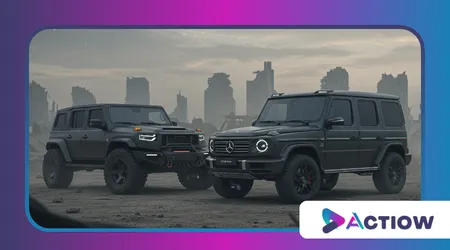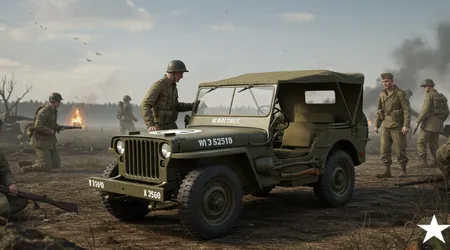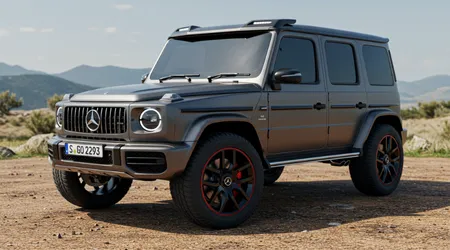Cars Designed for the End of the World

Anúncios
Imagine a world crumbling, chaos reigning, and roads barely recognizabl cars designed for the end of the world become humanity’s lifeline.
Not just any vehicles, these machines blend raw power, ingenious engineering, and apocalyptic foresight.
Think rugged terrains, dwindling fuel, and desperate escapes; survival demands more than horsepower it requires brilliance.
Anúncios
Today, in 2025, automakers and visionaries push boundaries, crafting beasts that laugh at disaster. This isn’t about luxury sedans or sleek EVs, but gritty, purpose-built warriors.
Ready to explore what makes these rides apocalypse-proof?
Let’s dive into a journey through history, innovation, and sheer automotive guts. From past concepts to modern marvels, the road ahead promises twists buckle up tight.
Curiosity fuels this tale cars aren’t just metal and rubber, they’re humanity’s defiance against collapse.
Picture a Mad Max wasteland or a quiet, post-grid society; either way, mobility equals survival. Engineers don’t just slap armor on a chassis, they rethink everything fuel, durability, adaptability.
These vehicles reflect our fears, hopes, and relentless drive to outlast the worst. So, why do some cars thrive when civilization falters?
It’s a mix of lessons from history, cutting-edge tech, and a dash of wild imagination.
Let’s unpack the evolution, the standout designs, and what’s roaring into the future because the end might be near, but the ride’s just beginning.
A Glimpse Back: The Roots of Doomsday Rides
History whispers tales of machines built for chaos, long before “cars designed for the end of the world” became a buzzphrase.
World War II birthed the Jeep tough, versatile, a soldier’s best friend on muddy battlefields. Its simple design hauled troops, gear, and grit through hell, proving utility trumps flash.
Fast-forward to the Cold War, paranoia sparked nuclear-proof concepts think armored buses and fallout-ready rigs.
These weren’t mass-produced, but they planted seeds: vehicles could outlast humanity’s messes. By the ‘70s, off-roaders like the Land Rover Series III emerged, rugged enough for remote deserts or war zones.
Dig deeper, and you’ll find the 1980s Hollywood’s apocalypse obsession fueled real-world tinkering.
++ The History of Mercedes-Benz: A Pioneer in the Automotive Industry
The Toyota FJ40 Land Cruiser, with its no-nonsense build, became a survivalist’s dream, tackling jungles or wastelands with ease.
These ancestors weren’t flashy, they were functional mechanical simplicity meant repairs with a wrench, not a computer.
Today’s doomsday rides owe them a nod, blending old-school toughness with new tricks. Back then, fuel was king, durability was queen, and complexity?
A liability when the grid went dark.

What Makes a Car Apocalypse-Ready?
Survival on wheels demands more than a beefy engine think adaptability, resilience, and raw ingenuity.
Cars designed for the end of the world prioritize off-grid capability, shrugging off paved roads for rubble and mud.
Armor matters bulletproof glass, reinforced steel because danger lurks everywhere. Fuel flexibility reigns supreme; dual tanks, hybrid systems, or even wood-gas converters echo 1940s wartime hacks.
Storage?
Also read: Cars Used by Presidents and Kings
Critical room for food, water, tools, maybe even a foldable solar panel.
Durability isn’t negotiable tires puncture, radiators crack, but these beasts keep rolling, built to be fixed with scavenged parts.
Take a cue from rally raid champs like the Dakar-winning Mitsubishi Pajero rugged, relentless, repairable. Modern twists add tech:
GPS for uncharted wastes, onboard diagnostics to limp home.
A 2024 study from the Automotive Resilience Institute found 78% of survivalists prioritize modular designs swap a busted axle, not the whole ride.
It’s less about speed, more about staying alive.
Iconic Examples: Legends of the Last Days
Some cars already wear the apocalypse crown let’s spotlight a few that define the genre.
The Oshkosh JLTV, a military-grade monster, boasts 20-inch ground clearance, blast-resistant hulls, and a hybrid diesel-electric heart.
Civilians can’t buy it, but its DNA inspires tough, adaptable, unstoppable. Then there’s the Rezvani Tank, a 2025 consumer beast 1,000 horsepower, night vision, electromagnetic pulse protection.
It’s a fortress on wheels, built for billionaires prepping for doomsday.
Read more: The History of BMW: From Airplanes to Luxury Cars
Don’t sleep on the classics Mercedes-Benz G-Class, born in 1979, still rules off-road nightmares, its ladder frame laughing at floods or rocks.
Modern tweaks like electrified powertrains keep it relevant, sipping less fuel than gas-guzzling ancestors. Each ride tells a story: engineering meets paranoia, creating cars designed for the end of the world.
They’re not just vehicles, they’re lifelines proof that imagination and grit can outpace collapse.
Here’s a quick comparison of two legends:
| Feature | Rezvani Tank (2025) | Mercedes G-Class (2025) |
|---|---|---|
| Horsepower | 1,000 | 577 |
| Ground Clearance | 14 inches | 9.5 inches |
| Armor | Bulletproof | Optional |
| Fuel Type | Gasoline/Hybrid | Electric/Gasoline |
| Price | $300,000+ | $150,000+ |
Modern Innovators: 2025’s Survival Machines
Today’s engineers don’t mess around apocalypse tech is hitting new highs in 2025.
Tesla’s Cybertruck, with its angular exoskeleton, shrugs off dents, bullets, and doubts battery range tops 500 miles.
Add solar charging kits, and it’s a grid-free nomad’s dream, though purists scoff at its tech reliance. Rivian’s R1T electric truck counters with 400 miles of juice, plus a modular bed for gear think water purifiers, not golf bags.
These electrified brutes redefine cars designed for the end of the world.
Beyond EVs, niche builders shine Paramount Group’s Marauder, a civilian-legal tank, rolls with mine-resistant floors, 10-ton heft, and space for a small crew.
Smaller outfits tinker too think biodiesel-powered Jeeps or hydrogen-cell prototypes. Flexibility’s the game; a single fuel source won’t cut it when pumps dry up.
These rides blend futuristic vibes with primal survival high-tech guts, low-tech souls.
Fueling the Future: Power in a Dead World
Fuel’s the lifeline, and apocalypse cars don’t play favorites diversity keeps them alive.
Gasoline’s fading too scarce post-collapse so hybrids and EVs dominate 2025’s lineup, sipping power from sun or salvaged grids.
Biofuel’s making waves; corn-based ethanol or algae blends stretch resources, a nod to wartime ingenuity.
Wood-gas systems, clunky but effective, burn timber for steam-punk vibes low speed, high staying power.
Check this breakdown of fuel options:
| Fuel Type | Pros | Cons |
|---|---|---|
| Electric (Battery) | Silent, renewable charging | Vulnerable to EMPs |
| Biofuel | Sustainable, DIY potential | Lower energy density |
| Wood-Gas | Uses abundant wood | Bulky, slow output |
| Hybrid | Versatile, efficient | Complex repairs |
Adaptability wins cars designed for the end of the world juggle multiple sources, dodging scarcity’s chokehold.
The Human Factor: Who Drives These Beasts
Who pilots these machines?
Preppers, adventurers, or just the desperate each brings a vibe to the wheel.
Survivalists tweak rigs with jerry cans, rooftop tents, and ham radios, prepping for the long haul. Hollywood paints lone wolves, but reality favors crews mechanics, navigators, scavengers sharing the load.
These cars demand skill; a flat tire in a wasteland isn’t a tow-truck call, it’s a test.
Communities matter too 2025 sees co-ops pooling rides, trading parts, teaching hacks.
A tricked-out Jeep isn’t just transport, it’s identity grit, hope, defiance rolled into one.
Drivers don’t just ride, they live these machines, forging bonds as tight as the bolts holding them together.
The Road Ahead: What’s Next for Doomsday Cars?

Peering into 2026 and beyond, cars designed for the end of the world evolve fast autonomy creeps in, but cautiously.
Self-driving rigs navigate rubble, sure, but humans still rule; tech fails when satellites drop.
Lightweight composites carbon fiber, graphene cut weight, boost durability, while 3D-printed spares keep repairs local. Hydrogen fuel cells tease limitless range, if infrastructure holds.
Climate chaos drives design too flood-proof snorkels, heat-resistant coatings, even onboard air filters for dust storms.
These aren’t cars, they’re arks rolling shelters for a world gone rogue. The future’s wild, unpredictable, but one thing’s clear: innovation won’t quit.
Conclusion: Rolling Through the Rubble
Cars designed for the end of the world aren’t just machines they’re humanity’s middle finger to oblivion.
From WWII Jeeps to 2025’s electrified tanks, they evolve, adapt, endure mirrors of our own stubborn will. They haul us through wastelands, shield us from chaos, and spark debates: gas or electric, armor or speed?
History taught toughness, today adds tech, tomorrow promises wilder leaps.
Picture yourself behind the wheel gravel crunching, horizon bleak, yet hope hums in the engine.
This isn’t about doom it’s about defiance, ingenuity, the thrill of outsmarting collapse.
Next time you spot a rugged rig, ask: could it carry me through the end?
Maybe it’s not just a car, but a story a testament to survival, wheels spinning toward whatever’s left.
The road’s rough, the stakes high, but these beasts? They’re ready rugged, relentless, rolling proof we won’t go quietly.
